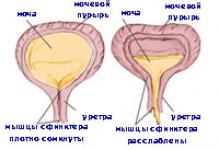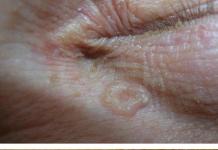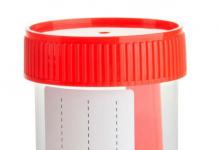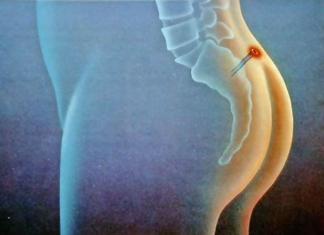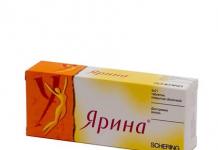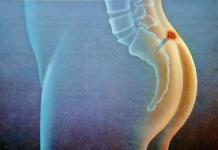Antihypertensives - angiotensin-converting enzyme inhibitors.
Composition of Enalapril
Enalapril.
Manufacturers
Hexal AG (Germany), Salutas Pharma GmbH (Germany)
pharmachologic effect
Hypotensive, cardioprotective.
It undergoes biotransformation in the liver with the formation of an active metabolite - enalaprilat.
Enalaprilat easily passes through histohematic barriers, excluding the BBB, and penetrates the placenta.
Excreted mainly by the kidneys.
A decrease in blood pressure appears 1 hour after administration, reaches a maximum at 6 hours and continues for 1 day.
In some patients, therapy for several weeks is necessary to achieve optimal blood pressure levels.
In case of heart failure, long-term (for 6 months) treatment increases exercise tolerance, helps to reduce heart size, and reduces mortality.
The hypotensive effect of enalapril is due to a decrease in the blood levels of angiotensin II and aldosterone, an increase in the concentration of bradykinin and PGE2.
A decrease in total peripheral vascular resistance is accompanied by an increase in cardiac output without changing the heart rate, a decrease in pressure in the pulmonary capillaries and unloading of the pulmonary circulation, which results in an increase in exercise tolerance and a decrease in the size of a dilated heart.
Side effects of Enalapril
Central nervous system depression, depression, ataxia, convulsions, drowsiness or insomnia, peripheral neuropathy, disturbances of vision, taste, smell, ringing in the ears, conjunctivitis, lacrimation, hypotension, myocardial infarction, acute cerebrovascular accident (as a result of hypotension), cardiac arrhythmia ( atrial tachy- or bradycardia, atrial fibrillation), orthostatic hypotension, angina attack, branch thromboembolism pulmonary artery, bronchospasm, dyspnea, nonproductive cough, interstitial pneumonitis, bronchitis and other upper respiratory tract infections, rhinorrhea, stomatitis, xerostomia, glossitis, anorexia, dyspepsia, melena, constipation, pancreatitis, liver dysfunction ( cholestatic hepatitis hepatocellular necrosis), kidney dysfunction, oliguria, urinary tract infections, gynecomastia, impotence, neutropenia, thrombocytopenia, exfoliative dermatitis, toxic epidermal necrolysis, pemphigus, enclosure of lies, alopecia, photodermatitis, allergic reactions (Syndrome of the State Sona, urticaria, Quincke's edema , anaphylactic shock, etc.).
Indications for use
Hypertension, symptomatic arterial hypertension, heart failure, diabetic nephropathy, secondary hyperaldosteronism, Raynaud's disease, scleroderma, complex therapy of myocardial infarction, angina pectoris, chronic renal failure.
Contraindications Enalapril
Hypersensitivity, pregnancy, breastfeeding, childhood.
Directions for use and dosage
The initial dose is 5 mg 1 time per day, and in patients with kidney pathology or taking diuretics - 2.5 mg 1 time per day.
If well tolerated and necessary, the dose can be increased to 10-40 mg per day once or in two doses.
Overdose
Symptoms:
- hypotension,
- development of myocardial infarction,
- acute cerebrovascular accident and thromboembolic complications due to sharp decline HELL.
Treatment:
- IV administration isotonic solution sodium chloride and symptomatic therapy.
Interaction
The simultaneous administration of other antihypertensive drugs, barbiturates, lithium preparations, tricyclic antidepressants, thiazine derivatives or alcohol intake leads to a sharp decrease in blood pressure.
Analgesics and non-steroidal anti-inflammatory drugs reduce the effect of the drug.
Simultaneous treatment with cytostatics, immunosuppressants and corticosteroids leads to leukopenia.
When taking potassium-sparing diuretics and/or potassium supplements simultaneously, hyperkalemia is possible, and drugs containing theophylline may reduce their effect.
special instructions
Caution must be exercised when prescribing the drug to patients on a low-salt or salt-free diet.
Before and during treatment, monitoring of blood pressure, renal function, the concentration of transaminases and alkaline phosphatase in the vascular bed is necessary (if their levels increase, treatment is canceled).
The drug is prescribed with caution in case of impaired renal function (dose selection should be carried out under the control of enalapril in the blood).
Storage conditions
List B.
Store in a dry place, protected from light, at room temperature, but not higher than 25 degrees. WITH.
27.10.2018
Enalapril is an antihypertensive (blowing blood pressure) drug of the inhibitor group.
Angiotensin is a protein substance that causes spasm of the walls of blood vessels, releasing aldosterone from the adrenal glands, which retains salt and fluid in the body. Enalapril converts angiotensin, reduces its effect on blood vessels and increased pressure.
Blood pressure is related to the work of the heart: upper (systolic) – the heart contraction is maximum, lower (diastolic) – the heart is maximally relaxed. Normal values: 120/80 mmHg. Art. A Arterial hypertension (AH) is a persistent increase in pressure, has three degrees of development:
- optimal pressure – 120/80;
- normal – 120-130/80-85;
- increased – 130-139/85-89;
- 1st degree hypertension – 140-159/90-99;
- 2nd degree hypertension – 160-179/100-109;
- Stage 3 hypertension – above 180/above 110.
The active components of this drug reduce both upper (systolic) and lower (diastolic) pressure. This makes it possible to use the drug as a prophylactic agent and normalize the condition of patients with grade 2-3 hypertension.
The medicine reduces blood pressure gently, without affecting the blood circulation of the brain and its work, reduces the load on the heart muscles and improves vascular patency, and has a slight diuretic (diuretic) effect.
The effect of taking the drug occurs within an hour, the medicinereduces blood pressure and acts within 24 hours, so Enalapril is not suitable for emergency assistance. It is not used for hypertensive crises. It must be taken regularly in doses prescribed by the doctor and after 7-14 days it should stabilize the patient’s blood pressure. To have a positive effect on the heart muscle, you need to take this medicine for a long time (duration - from several weeks to six months).
Dosage form
International name: enalapril, blood pressure tablets, available under other names trade names depending on the manufacturer enam (India), enap (Slovenia).Group - ACE inhibitors(angiotensin converting enzyme). Tablets are biconvex, round, white with a score in the middle, 5, 10, 20 mg in blisters of 10 pcs. and cardboard packaging. Vacation - according to a doctor's prescription. Shelf life – 2 years, store at a temperature of 15-25 O C in a dry, dark place.
Active substance— enalapril maleate - 5 mg; excipients: lactose monohydrate, sodium starch glycolate, cellulose, polyvinylpyrrolidone, silicon dioxide (aerosil), talc, magnesium stearate, sodium bicarbonate.
pharmachologic effect
The drug Enalapril for blood pressure, due to its vasodilating effect, will reduce peripheral vascular resistance, reduce the load on the myocardium, and gradually normalize blood pressure. Taking the medicine has the following effects on the body:
- relaxation of the walls of arteries and veins (to a lesser extent);
- reduces upper and lower pressure;
- reduces the load on the heart muscle;
- improves blood flow in the cardiac and renal arteries;
- prevents the development of heart failure;
- gives a slight diuretic effect, which reduces water retention in the body;
- with long-term use, it inhibits the process of hypertrophy (muscle thickening and loss of elasticity) of the left ventricle of the heart, which occurs with hypertension;
- reduces the risk of blood clots by reducing the process of platelet aggregation.
Indications for use
 At high blood pressure caused by scleroderma, CHF, coronary ischemia, left ventricular dysfunction, Enalapril is used.
At high blood pressure caused by scleroderma, CHF, coronary ischemia, left ventricular dysfunction, Enalapril is used.
The medicine is taken regardless of time meals, it can be combined with diuretics, metabolic and otherblood pressure pills. You must tell your doctor about all medications you are taking and any chronic diseases you have.
Enalapril is prescribed:
- at arterial hypertension, for the treatment of renal hypertension;
- for chronic heart failure (in combination with other drugs) to prevent abnormal growth and loss of elasticity of the left ventricular muscle.
To reduce high blood pressureThe initial dosage is prescribed - 5 mg of Enalapril per day. If there is no desired effect, the dose can be increased to 10 mg per day (in 2 doses). Maximum daily dose– 40 mg. For heart failure - 5-20 mg per day.
In elderly people, the process of metabolism and excretion from the body is slowed down, so the dosage is reduced (initial dose - 1.25 mg/day).
The doctor prescribes a regimen for how to take Enalapril correctly for a specific patient, taking into account clinical picture illness, general condition and the presence of concomitant diseases. He also increases or decreases the dose. During the period of taking E follow nalapril instructions for use and when you need to stop taking it.
During the treatment you need:
- monitor blood pressure throughout the day;
- check blood and urine parameters (do laboratory tests);
- monitor the condition of the kidneys and heart;
- do not exceed the dosage, choose the minimum dose that gives the desired effect;
- do not drink alcohol.
In case of overdose, you should immediately seek medical help.
Contraindications
- allergies, individual sensitivity to the drug;
- age under 12 years, over 65 years;
- angioedema;
- bilateral renal artery stenosis, renal failure;
- liver diseases
- pregnancy and breastfeeding;
- hypertrophic cardiomyopathy
- mitral or arterial valve stenosis;
- gastrointestinal diseases;
- metabolic disorders, hyperkalemia;
- diabetes;
- vascular diseases.
Whenever allergic reaction If you are taking a drug that can be very dangerous, call an ambulance immediately:
- severe abdominal pain;
- swelling of the tongue, larynx, face;
- cough and difficulty breathing;
- slow heart rate (exceeded potassium level in the body);
- with the kidneys (difficulty urinating;
- sudden muscle weakness;
- chills, weak pulse;
- pre-fainting state.
Side effects
Enalapril has no serious side effects. The drug is usually well tolerated by patients. Side effects observed:
in a small number of patients (2-3%)
- dizziness and headache;
- increased fatigue, asthenia;
- dry cough;
in rare cases (less than 2% of cases)
- hypotension
- orthostatic reactions
- sensation of tachycardia (heartbeat more than 90 beats/min.);
- fainting
- muscle cramps, diarrhea, nausea
- allergies (angioedema, skin rashes);
even less often:
- impaired kidney function (renal failure);
- hyperkalemia;
- oliguria;
- hyponatremia;
- dry mouth;
in rare cases
- insomnia or drowsiness;
- depression;
- bronchospasm;
- disturbances of vision, taste, smell;
- interstitial pneumonitis;
- glossitis;
- cholestatic hepatitis;
- indigestion.
In the beginning, after taking enalapril, dizziness may occur due to a sharp decrease in blood pressure. You need to stay at home and lie down if necessary. It is better to take the medicine during the day; do not drink before bed, as it has a diuretic effect. For complex therapy of SHF, a test dose of Enalapril Hexal is prescribed - 2.5 mg. After 3-4 days, increase to 5 mg until a therapeutic effect is obtained.
Enalapril FPO and Acri can be taken at any time 2.5-5 mg per day, but not more than 20 mg, 40 mg is the maximum allowable dose. You can take the drug for a long time and even for life, if there are no adverse reactions.
The active substance of the drug is absorbed by 60% within an hour, the maximum effect occurs after 7 hours. In case of an overdose, a sharp drop in pressure and the onset of collapse, risk of heart attack, ischemic disorders, and convulsions are possible. If such symptoms of a side effect of the drug appear, it is necessary to rinse the stomach, lay the patient down with his legs elevated and call an ambulance.
Sometimes, with long-term use of the drug, depression occurs, the temperature rises, or a rash appears on the body, then these side effects usually go away after stopping treatment.
Analogues and substitutes
 There are many analogues of Enalapril produced by pharmaceutical companies:
There are many analogues of Enalapril produced by pharmaceutical companies:
- Lisinopril is weaker than Enalapril to obtain a similar effect it must be taken in large doses. Negatively affects male potency. It is excreted from the body only by the kidneys, unlike Enalapril, which is excreted by both the kidneys and the liver.
- Enap (KRKA company, Slovenia). Available in the form of tablets and solutions (for injection). It works more effectively, the quality is high, and side effects are extremely rare. However, the price is slightly higher: 280-4000 rubles. — packaging, 500 rub. – 10 ampoules, than Enalapril – 20-25 UAH.
- Enalapril Hexal (Germany). This German analogue is not at all more effective than Russian Enalapril, and its cost is higher (78-100 rubles per pack).
- Captopril and Enalapril are drugs of the same group, they are therapeutic effect the same (reduction of pressure and improvement of myocardial function). Differences: Enalapril is able to maintain normal blood pressure; to obtain the same result, Captopril must be taken 2-3 times a day. But Captopril is absorbed into the blood and is more effective in the case of hypertensive crisis for emergency care and for heart failure, used for cardiac pathologies.
- Enalapril FPO is a domestically produced drug. Has the same effect adverse reactions, differ in price and dose: Enalapril FPO - 80 mg, Enalapril - 40 mg.
- Lorista is a drug that has minimal side effects: no dry cough, does not affect male potency, can be used for elderly patients (over 60) and patients with renal failure.
- Lozap is a similar drug, there are no special differences, take it once a day at the same time.
- Berlipril (Berlin-Chemie company, Germany). The active ingredient enalapril amlodipine is a complex compound, price 140-180 rubles.
Pharmacies also offer other analogues similar to Enalapril in composition: Renitec, Miopril calpiren, Vasoprene, Envas. These drugs replicate the domestic Enalapril. If the drug causes any side effects, then you cannot replace it with analogues yourself without consultation and advice from your attending physician.
Enalapril maleate (enalapril)
Composition and release form of the drug
Pills from white to white with a yellowish tint, round, biconvex.
Excipients: microcrystalline cellulose - 73 mg, pregelatinized corn starch - 30 mg, talc - 3 mg, colloidal silicon dioxide - 1 mg, magnesium stearate - 1 mg.
10 pieces. - contour cellular packaging (1) - cardboard packs.
10 pieces. - contour cellular packaging (2) - cardboard packs.
10 pieces. - contour cellular packaging (3) - cardboard packs.
10 pieces. - contour cellular packaging (5) - cardboard packs.
10 pieces. - contour cellular packaging (10) - cardboard packs.
pharmachologic effect
ACE inhibitor. It is a prodrug from which the active metabolite enalaprilat is formed in the body. It is believed that the mechanism of antihypertensive action is associated with competitive inhibition of ACE activity, which leads to a decrease in the rate of conversion of angiotensin I to angiotensin II (which has a pronounced vasoconstrictor effect and stimulates the secretion of aldosterone in the adrenal cortex).
As a result of a decrease in the concentration of angiotensin II, there is a secondary increase in renin activity due to the elimination of negative feedback on the release of renin and a direct decrease in aldosterone secretion. In addition, enalaprilat appears to have an effect on the kinin-kallikrein system, preventing the breakdown of bradykinin.
Thanks to its vasodilating effect, it reduces roundabout percentage (afterload), wedge pressure in the pulmonary capillaries (preload) and resistance in the pulmonary vessels; increases cardiac output and exercise tolerance.
In patients with chronic heart failure, long-term use of enalapril increases tolerance to physical activity and reduces the severity of heart failure (assessed by NYHA criteria). Enalapril in patients with mild and medium degree slows its progression, and also slows down the development of left ventricular dilatation. In case of left ventricular dysfunction, enalapril reduces the risk of major ischemic outcomes (including the incidence of myocardial infarction and the number of hospitalizations for unstable angina).
Pharmacokinetics
When taken orally, about 60% is absorbed from the gastrointestinal tract. Simultaneous use food does not affect absorption. Metabolized in the liver by hydrolysis with the formation of enalaprilat, due to the pharmacological activity of which a hypotensive effect is realized. The binding of enalaprilat to plasma proteins is 50-60%.
T1/2 of enalaprilat is 11 hours and increases with renal failure. After oral administration, 60% of the dose is excreted by the kidneys (20% as enalapril, 40% as enalaprilat), 33% is excreted through the intestines (6% as enalapril, 27% as enalaprilat). After intravenous administration of enalaprilat, 100% is excreted unchanged by the kidneys.
Indications
Arterial hypertension (including renovascular), chronic failure (as part of combination therapy).
Essential hypertension.
Chronic heart failure (as part of combination therapy).
Prevention of the development of clinically significant heart failure in patients with asymptomatic left ventricular dysfunction (as part of combination therapy).
Prevention of coronary ischemia in patients with left ventricular dysfunction in order to reduce the incidence of myocardial infarction and reduce the frequency of hospitalizations for unstable angina.
Contraindications
History of angioedema, bilateral renal artery stenosis or renal artery stenosis of a single kidney, hyperkalemia, porphyria, simultaneous use with aliskiren in patients with diabetes mellitus or impaired renal function (KR<60 мл/мин), беременность, период лактации (грудного вскармливания), детский и подростковый возраст до 18 лет, повышенная чувствительность к эналаприлу и другим ингибиторам АПФ.
Dosage
When taken orally, the initial dose is 2.5-5 mg 1 time / day. The average dose is 10-20 mg/day in 2 divided doses.
Maximum daily dose when taken orally it is 80 mg.
Side effects
From the nervous system: dizziness, headache, feeling tired, increased fatigue; very rarely when used in high doses - sleep disorders, nervousness, depression, imbalance, paresthesia, tinnitus.
From the cardiovascular system: orthostatic hypotension, fainting, palpitations, pain in the heart area; very rarely when used in high doses - hot flashes.
From the digestive system: nausea; rarely - dry mouth, abdominal pain, vomiting, diarrhea, constipation, impaired liver function, increased activity of liver transaminases, increased concentration of bilirubin in the blood, hepatitis, pancreatitis; very rarely when used in high doses - glossitis.
From the hematopoietic system: rarely - neutropenia; in patients with autoimmune diseases - agranulocytosis.
From the urinary system: rarely - renal dysfunction, proteinuria.
From the respiratory system: dry cough.
From the reproductive system: very rarely, when used in high doses - impotence.
Dermatological reactions: very rarely when used in high doses - hair loss.
Allergic reactions: rarely - skin rash, Quincke's edema.
Other: rarely - hyperkalemia, muscle cramps.
Drug interactions
When used simultaneously with cytostatics, the risk of developing leukopenia increases.
With the simultaneous use of potassium-sparing diuretics (including spironolactone, triamterene, amiloride), potassium supplements, salt substitutes and dietary supplements containing potassium, hyperkalemia may develop (especially in patients with impaired renal function), because ACE inhibitors reduce the content of aldosterone, which leads to potassium retention in the body while limiting the excretion of potassium or its additional intake into the body.
With the simultaneous use of opioids and anesthetics, the antihypertensive effect of enalapril is enhanced.
With the simultaneous use of loop diuretics and thiazide diuretics, the antihypertensive effect is enhanced. There is a risk of developing hypokalemia. Increased risk of renal dysfunction.
When used simultaneously with azathioprine, anemia may develop, which is due to inhibition of erythropoietin activity under the influence of ACE inhibitors and azathioprine.
A case of the development of an anaphylactic reaction and myocardial infarction with the use of allopurinol in a patient receiving enalapril is described.
In high doses, it may reduce the antihypertensive effect of enalapril.
It has not been conclusively established whether acetylsalicylic acid reduces the therapeutic effectiveness of ACE inhibitors in patients with coronary artery disease and heart failure. The nature of this interaction depends on the course of the disease.
Acetylsalicylic acid, by inhibiting COX and prostaglandin synthesis, can cause vasoconstriction, which leads to a decrease in cardiac output and worsening of the condition of patients with heart failure receiving ACE inhibitors.
With the simultaneous use of beta-blockers, methyldopa, nitrates, hydralazine, prazosin, the antihypertensive effect may be enhanced.
When used simultaneously with NSAIDs (including indomethacin), the antihypertensive effect of enalapril is reduced, apparently due to inhibition of the synthesis of prostaglandins under the influence of NSAIDs (which are believed to play a role in the development of the hypotensive effect of ACE inhibitors). The risk of developing renal dysfunction increases; hyperkalemia is rarely observed.
With the simultaneous use of insulin and hypoglycemic agents, sulfonylurea derivatives, hypoglycemia may develop.
With simultaneous use of ACE inhibitors and interleukin-3, there is a risk of developing arterial hypotension.
When used concomitantly, there are reports of the development of syncope.
When used simultaneously with clomipramine, increased effects of clomipramine and the development of toxic effects are reported.
When used simultaneously with co-trimoxazole, cases of hyperkalemia have been described.
When used simultaneously with lithium carbonate, the concentration of lithium in the blood serum increases, which is accompanied by symptoms of lithium intoxication.
When used simultaneously with orlistat, the antihypertensive effect of enalapril is reduced, which can lead to a significant increase in blood pressure and the development of a hypertensive crisis.
It is believed that when used simultaneously with procainamide, there may be an increased risk of developing leukopenia.
When used simultaneously with enalapril, the effect of drugs containing theophylline is reduced.
There are reports of the development of acute renal failure in patients after kidney transplantation when used simultaneously with cyclosporine.
When used simultaneously with cimetidine, the half-life of enalapril increases and its concentration in the blood plasma increases.
It is believed that the effectiveness of antihypertensive drugs may be reduced when used simultaneously with erythropoietins.
When used simultaneously with ethanol, the risk of developing arterial hypotension increases.
special instructions
Use with extreme caution in patients with autoimmune diseases, diabetes mellitus, liver dysfunction, severe aortic stenosis, subaortic muscular stenosis of unknown origin, hypertrophic cardiomyopathy, and loss of fluid and salts. In the case of previous treatment with saluretics, in particular in patients with chronic heart failure, the risk of developing orthostatic hypotension increases, therefore, before starting treatment with enalapril, it is necessary to compensate for the loss of fluid and salts.
With long-term treatment with enalapril, it is necessary to periodically monitor the peripheral blood picture. Sudden cessation of enalapril does not cause a sharp increase in blood pressure.
During surgical interventions during treatment with enalapril, arterial hypotension may develop, which should be corrected by administering a sufficient amount of fluid.
Before studying the function of the parathyroid glands, enalapril should be discontinued.
Impact on the ability to drive vehicles and machinery
Caution is required when driving vehicles or performing other work that requires increased attention, because Dizziness may occur, especially after taking the initial dose of enalapril.
Pregnancy and lactation
Contraindicated for use during pregnancy. If pregnancy occurs, enalapril should be stopped immediately.
Enalapril is excreted in breast milk. If it is necessary to use it during lactation, the issue of stopping breastfeeding should be decided.
Use in childhood
The safety and effectiveness of enalapril in children have not been established.
For liver dysfunction
Use with extreme caution in patients with impaired liver function.
Enalapril is an antihypertensive drug that has hypotensive, cardioprotective, vasodilating and natriuretic effects. Instructions for use recommend taking tablets of 5 mg, 10 mg and 20 mg (including Hexal or Acri) for the treatment of various forms of arterial hypertension, including those in the absence of the required effect when taking other antihypertensive drugs. Reviews from patients and doctors explain at what pressure this drug helps.
Release form and composition
Enalapril is available in the form of round, white or white with a beige tint, cylindrical, biconvex tablets, with a score line on one side. Packaged in blisters of 10 and 20 pieces.
Pharmacological properties
Enalapril tablets are an angiotensin-converting enzyme inhibitor. Instructions for use (price, reviews, analogues will be discussed below in the article) indicate that the medicine helps reduce systolic and diastolic blood pressure, total peripheral vascular resistance, as well as the load on the myocardium.
A decrease in blood pressure within therapeutic limits does not affect cerebral circulation, since blood flow in the vessels of the brain can be maintained at the required level even against the background of low blood pressure.
Long-term use of Enalapril significantly reduces left ventricular hypertrophy of the myocardium, preventing the development of chronic heart failure.
The drug also exhibits a mild diuretic effect. The use of the drug helps improve renal and coronary blood flow. The hypotensive effect of the drug appears 1 hour after taking it and continues for 24 hours.
What does Enalapril help with?
Indications for use of the drug include:
- left ventricular dysfunction;
- arterial hypertension;
- chronic heart failure (as part of combination therapy).
At what pressure is it prescribed?
- Treatment of essential hypertension (primary increase in blood pressure without pathological processes of the cardiovascular network), even if blood pressure does not exceed 130/90 mm Hg. Art. Nutritional disorders of the brain and heart muscle are already observed. Any excess of the norm (120/80 mm Hg) is a direct indication for the use of Enalapril. The dosage and course of treatment are selected by the doctor based on the results of the study on the state of the cardiovascular system and the patient’s background diseases.
- Treatment of hypertension at any stage of the disease with blood pressure above 120/80 mmHg. Art. for normotensives, in the initial form of hypertension, it is prescribed, as well as in complicated and advanced cases in combination with other drugs. It is important to remember that not all drugs are combined with each other; complex treatment is carried out only under the joint supervision of a therapist and a cardiologist, which reduces the risk of complications. The dosage of Enalapril may vary throughout therapy and is selected individually under dynamic monitoring of the patient’s blood pressure and general condition.
- The minimum dosage of 1.25 ml of the drug is prescribed to people with a blood pressure of 120/80 mmHg. Art. subject to operating pressure 100/60 mm Hg. Art. (treatment of high blood pressure in hypotensive patients is carried out in short courses of 1–3 months if they feel unwell).
Instructions for use
Enalapril is taken orally, regardless of meals. The initial dosage for arterial hypertension is 5 mg/day. If the expected effect does not occur, you can increase the dose to 10 mg.
If the drug is well tolerated, it is permissible to increase the dose to 40 mg/day, divided into 1-2 doses. After 2-3 weeks, you can reduce the dose to a maintenance level of 10-40 mg/day. The recommended dosage for moderate hypertension is 10 mg/day.
The initial dose for renovascular hypertension is 2.5-5 mg/day. In cases of severe arterial hypertension, intravenous administration of the drug in a hospital setting is acceptable.
The initial dosage for chronic heart failure is 2.5 mg. Subsequently, increase the dose every 3-4 days by 2.5-5 mg of Enalapril according to clinical response indications, but not more than 40 mg/day, with single or twice daily administration.
For asymptomatic dysfunction of the left ventricular myocardium, the recommended dosage is 5 mg/day, divided into two equal doses of 2.5 mg.
The maximum dose is 40 mg/day.
Contraindications

- porphyria;
- pregnancy;
- lactation period;
- increased sensitivity to ACE inhibitors, from which Enalapril tablets can cause side effects;
- age under 18 years (efficacy and safety have not been established);
- a history of angioedema associated with treatment with ACE inhibitors.
Side effects
- headache;
- weakness;
- depression;
- anxiety;
- tides;
- increased fatigue;
- drowsiness (2-3%);
- dry mouth;
- excessive decrease in blood pressure;
- noise in ears;
- dizziness;
- insomnia;
- dyspnea;
- hives;
- skin rash;
- renal dysfunction;
- angioedema;
- orthostatic collapse;
- stomatitis;
- glossitis;
- interstitial pneumonitis;
- myocardial infarction (usually associated with a pronounced decrease in blood pressure);
- arrhythmias (atrial bradycardia or tachycardia, atrial fibrillation);
- anorexia;
- intestinal obstruction;
- unproductive dry cough;
- alopecia;
- chest pain;
- disorders of the vestibular apparatus;
- bronchospasm;
- confusion;
- angina pectoris;
- decreased libido;
- dyspeptic disorders (nausea, diarrhea or constipation, vomiting, abdominal pain);
- toxic epidermal necrolysis.
Children, pregnancy and breastfeeding
The drug is contraindicated during pregnancy and breastfeeding.
Enalapril is contraindicated in people under 18 years of age (due to the fact that the safety and effectiveness of the drug in childhood have not been established).
special instructions
Caution must be exercised when prescribing Enalapril to patients with reduced blood volume (as a result of diuretic therapy, limiting salt intake, hemodialysis, diarrhea and vomiting) - the risk of a sudden and pronounced decrease in blood pressure is increased after using even the initial dose of an ACE inhibitor.
Transient arterial hypotension is not a contraindication for continuing treatment with the drug after stabilization of blood pressure. In case of a repeated pronounced decrease in blood pressure, the dose should be reduced or the drug discontinued.
The use of highly permeable dialysis membranes increases the risk of developing an anaphylactic reaction. Correction of the dosage regimen on days free from dialysis should be carried out depending on the level of blood pressure.
Drug interactions

Beta-blockers, nitrates, slow calcium channel blockers, diuretics, prazosin, methyldopa and hydralazine enhance the hypotensive effect of Enalapril.
When prescribing the drug according to indications together with NSAIDs, the hypotensive effect of the former may be reduced. The drug reduces the effectiveness of drugs that contain theophylline.
Allopurinol, immunosuppressants and cytostatics increase hematotoxicity.
Analogues of the drug Enalapril
Analogues are distinguished by structure:
- Ednit.
- Enazil 10.
- Vero-Enalapril.
- Berlipril 5.
- Enap.
- Envipril.
- Invoril.
- Enafarm.
- Bagopril.
- Enalapril HEXAL.
- Enalapril-Agio.
- Renitek.
- Enalacor.
- Berlipril 10.
- Renipril.
- Enam.
- Vazolapril.
- Corandil.
- Enalapril-UBF.
- Enalapril maleate.
- Envas.
- Berlipril 20.
- Miopril.
- Enalapril-AKOS.
- Enalapril-FPO.
- Enarenal.
- Enalapril-Acri.
Vacation conditions and price
The average price of ENALAPRIL in pharmacies (Moscow) is 59 rubles. In Kyiv you can buy medicine for 10 hryvnia, in Kazakhstan - for 70 tenge. In Minsk, pharmacies offer tablets for 0.80-0.90 BYN. rubles Dispensed from pharmacies with a prescription.
Post Views: 2,429
Enalapril is an angiotensin-converting enzyme (ACE) inhibitor. The human body is a collection of many biochemical reactions that control its vital activity at the cellular level. The renin-angiotensin-aldosterone system is one of these cycles of sequential transformations of biologically active substances, which plays an important role in the regulation of blood pressure and water-salt balance. By inactivating one of the important links in this cycle - angiotensin - enalapril thereby prevents the formation of the adrenal hormone aldosterone, which, in turn, causes a decrease in blood pressure.
Enalapril is an indispensable remedy in the first aid kit for every patient suffering from hypertension. In addition to the hypotensive effect, it also has many positive qualities regarding the cardiovascular system. This includes a reduction in excess vascular tone, a reduction in the load on the heart muscle, and a mild diuretic effect. The pronounced effect of a single dose of the drug is felt 4-6 hours after administration and persists throughout the day. However, one should not expect miracles from it here and now: people with heart failure need to take enalapril for at least 6 months to achieve a clear clinical effect.
The advantage of enalapril is that there is no need to make allowances for your daily gastronomic routine: it can be taken at any time, regardless of meals. There are many regimens for taking this drug, depending on the disease and the age of the patient. As a general rule, when treating arterial hypertension with enalapril in the “solo” mode, the initial daily dose is 5 mg. If there are no obvious results, after 7-14 days the dose is increased by another 5 mg and so on up to 40 mg, above which you should not rise.
Elderly patients are more susceptible to the action of enalapril, which is manifested in a slightly more pronounced and long-lasting hypotensive effect. This is explained by the reduced rate of excretion of enalapril in older patients. In such cases, it is recommended to reduce the initial daily dose to 1.25 mg.
Enalapril works well both in combination with other antihypertensive drugs and on its own. The timing of taking the drug depends on the observed effect. The dose of the drug at which its clear therapeutic effect was achieved is not an unshakable constant and can subsequently be reduced to maintenance values.
Pharmacology
ACE inhibitor. It is a prodrug from which the active metabolite enalaprilat is formed in the body. It is believed that the mechanism of antihypertensive action is associated with competitive inhibition of ACE activity, which leads to a decrease in the rate of conversion of angiotensin I to angiotensin II (which has a pronounced vasoconstrictor effect and stimulates the secretion of aldosterone in the adrenal cortex).
As a result of a decrease in the concentration of angiotensin II, a secondary increase in plasma renin activity occurs due to the elimination of negative feedback during the release of renin and a direct decrease in aldosterone secretion. In addition, enalaprilat appears to have an effect on the kinin-kallikrein system, preventing the breakdown of bradykinin.
Thanks to its vasodilating effect, it reduces roundabout percentage (afterload), wedge pressure in the pulmonary capillaries (preload) and resistance in the pulmonary vessels; increases cardiac output and exercise tolerance.
In patients with chronic heart failure, with long-term use, enalapril increases exercise tolerance and reduces the severity of heart failure (assessed by NYHA criteria). Enalapril in patients with mild to moderate heart failure slows its progression and also slows down the development of left ventricular dilatation. In case of left ventricular dysfunction, enalapril reduces the risk of major ischemic outcomes (including the incidence of myocardial infarction and the number of hospitalizations for unstable angina).
Pharmacokinetics
When taken orally, about 60% is absorbed from the gastrointestinal tract. Concomitant food intake does not affect absorption. Metabolized in the liver by hydrolysis with the formation of enalaprilat, due to the pharmacological activity of which a hypotensive effect is realized. The binding of enalaprilat to plasma proteins is 50-60%.
T1/2 of enalaprilat is 11 hours and increases with renal failure. After oral administration, 60% of the dose is excreted by the kidneys (20% as enalapril, 40% as enalaprilat), 33% is excreted through the intestines (6% as enalapril, 27% as enalaprilat). After intravenous administration of enalaprilat, 100% is excreted unchanged by the kidneys.
Release form
10 pieces. - contour cell packaging (1) - cardboard packs.
10 pieces. - contour cell packaging (2) - cardboard packs.
10 pieces. - contour cell packaging (3) - cardboard packs.
10 pieces. - contour cell packaging (5) - cardboard packs.
10 pieces. - contour cellular packaging (2) - cardboard packs.
20 pcs. - contour cellular packaging (1) - cardboard packs.
20 pcs. - contour cellular packaging (2) - cardboard packs.
Dosage
When taken orally, the initial dose is 2.5-5 mg 1 time / day. The average dose is 10-20 mg/day in 2 divided doses.
With intravenous administration, 1.25 mg every 6 hours. To detect excessive hypotension, patients with sodium deficiency and dehydration due to previous diuretic therapy, patients receiving diuretics, as well as with renal failure, administer an initial dose of 625 mg. If the clinical response is inadequate, this dose can be repeated after 1 hour and treatment continued at a dose of 1.25 mg every 6 hours.
The maximum daily dose when taken orally is 80 mg.
Interaction
When used simultaneously with immunosuppressants and cytostatics, the risk of developing leukopenia increases.
With the simultaneous use of potassium-sparing diuretics (including spironolactone, triamterene, amiloride), potassium supplements, salt substitutes and dietary supplements containing potassium, hyperkalemia may develop (especially in patients with impaired renal function), because ACE inhibitors reduce the content of aldosterone, which leads to potassium retention in the body while limiting the excretion of potassium or its additional intake into the body.
With the simultaneous use of opioid analgesics and anesthetics, the antihypertensive effect of enalapril is enhanced.
With the simultaneous use of loop diuretics and thiazide diuretics, the antihypertensive effect is enhanced. There is a risk of developing hypokalemia. Increased risk of renal dysfunction.
When used simultaneously with azathioprine, anemia may develop, which is due to inhibition of erythropoietin activity under the influence of ACE inhibitors and azathioprine.
A case of the development of an anaphylactic reaction and myocardial infarction with the use of allopurinol in a patient receiving enalapril is described.
Acetylsalicylic acid in high doses may reduce the antihypertensive effect of enalapril.
It has not been conclusively established whether acetylsalicylic acid reduces the therapeutic effectiveness of ACE inhibitors in patients with coronary artery disease and heart failure. The nature of this interaction depends on the course of the disease.
Acetylsalicylic acid, by inhibiting COX and prostaglandin synthesis, can cause vasoconstriction, which leads to a decrease in cardiac output and worsening of the condition of patients with heart failure receiving ACE inhibitors.
With the simultaneous use of beta-blockers, methyldopa, nitrates, calcium channel blockers, hydralazine, prazosin, the antihypertensive effect may be enhanced.
When used simultaneously with NSAIDs (including indomethacin), the antihypertensive effect of enalapril is reduced, apparently due to inhibition of the synthesis of prostaglandins under the influence of NSAIDs (which are believed to play a role in the development of the hypotensive effect of ACE inhibitors). The risk of developing renal dysfunction increases; hyperkalemia is rarely observed.
With the simultaneous use of insulin and hypoglycemic agents, sulfonylurea derivatives, hypoglycemia may develop.
With simultaneous use of ACE inhibitors and interleukin-3, there is a risk of developing arterial hypotension.
Syncope has been reported when used concomitantly with clozapine.
When used simultaneously with clomipramine, increased effects of clomipramine and the development of toxic effects are reported.
When used simultaneously with co-trimoxazole, cases of hyperkalemia have been described.
When used simultaneously with lithium carbonate, the concentration of lithium in the blood serum increases, which is accompanied by symptoms of lithium intoxication.
When used simultaneously with orlistat, the antihypertensive effect of enalapril is reduced, which can lead to a significant increase in blood pressure and the development of a hypertensive crisis.
It is believed that when used simultaneously with procainamide, there may be an increased risk of developing leukopenia.
When used simultaneously with enalapril, the effect of drugs containing theophylline is reduced.
There are reports of the development of acute renal failure in patients after kidney transplantation when used simultaneously with cyclosporine.
When used simultaneously with cimetidine, the half-life of enalapril increases and its concentration in the blood plasma increases.
It is believed that the effectiveness of antihypertensive drugs may be reduced when used simultaneously with erythropoietins.
When used simultaneously with ethanol, the risk of developing arterial hypotension increases.
Side effects
From the central nervous system and peripheral nervous system: dizziness, headache, feeling of fatigue, increased fatigue; very rarely when used in high doses - sleep disorders, nervousness, depression, imbalance, paresthesia, tinnitus.
From the cardiovascular system: orthostatic hypotension, fainting, palpitations, pain in the heart; very rarely when used in high doses - hot flashes.
From the digestive system: nausea; rarely - dry mouth, abdominal pain, vomiting, diarrhea, constipation, impaired liver function, increased activity of liver transaminases, increased concentration of bilirubin in the blood, hepatitis, pancreatitis; very rarely when used in high doses - glossitis.
From the hematopoietic system: rarely - neutropenia; in patients with autoimmune diseases - agranulocytosis.
From the urinary system: rarely - renal dysfunction, proteinuria.
From the respiratory system: dry cough.
From the reproductive system: very rarely, when used in high doses - impotence.
Dermatological reactions: very rarely when used in high doses - hair loss.
Allergic reactions: rarely - skin rash, Quincke's edema.
Other: rarely - hyperkalemia, muscle cramps.
Indications
Arterial hypertension (including renovascular), chronic heart failure (as part of combination therapy).
Essential hypertension.
Chronic heart failure (as part of combination therapy).
Prevention of the development of clinically significant heart failure in patients with asymptomatic left ventricular dysfunction (as part of combination therapy).
Prevention of coronary ischemia in patients with left ventricular dysfunction in order to reduce the incidence of myocardial infarction and reduce the frequency of hospitalizations for unstable angina.
Contraindications
History of angioedema, bilateral renal artery stenosis or renal artery stenosis of a solitary kidney, hyperkalemia, porphyria, concomitant use with aliskiren in patients with diabetes mellitus or impaired renal function (CK<60 мл/мин), беременность, период лактации (грудного вскармливания), детский и подростковый возраст до 18 лет, повышенная чувствительность к эналаприлу и другим ингибиторам АПФ.
Features of application
Use during pregnancy and breastfeeding
Contraindicated for use during pregnancy. If pregnancy occurs, enalapril should be stopped immediately.
Enalapril is excreted in breast milk. If it is necessary to use it during lactation, the issue of stopping breastfeeding should be decided.
Use for liver dysfunction
Use with extreme caution in patients with impaired liver function.
Use in children
The safety and effectiveness of enalapril in children have not been established.
special instructions
Use with extreme caution in patients with autoimmune diseases, diabetes mellitus, liver dysfunction, severe aortic stenosis, subaortic muscular stenosis of unknown origin, hypertrophic cardiomyopathy, and loss of fluid and salts. In the case of previous treatment with saluretics, in particular in patients with chronic heart failure, the risk of developing orthostatic hypotension increases, therefore, before starting treatment with enalapril, it is necessary to compensate for the loss of fluid and salts.
With long-term treatment with enalapril, it is necessary to periodically monitor the peripheral blood picture. Sudden cessation of enalapril does not cause a sharp increase in blood pressure.
During surgical interventions during treatment with enalapril, arterial hypotension may develop, which should be corrected by administering a sufficient amount of fluid.
Before studying the function of the parathyroid glands, enalapril should be discontinued.
Impact on the ability to drive vehicles and operate machinery
Caution is required when driving vehicles or performing other work that requires increased attention, because Dizziness may occur, especially after taking the initial dose of enalapril.



